quantumcomputing
Latest
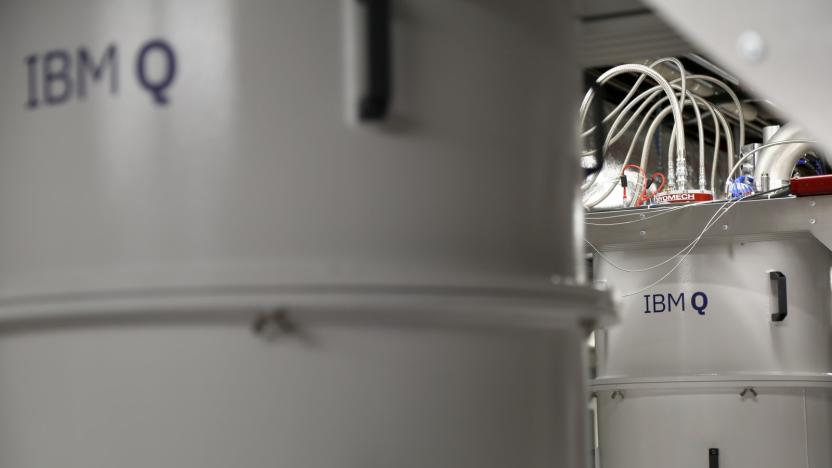
President poised to sign bill creating quantum computing initiative
Visions of an American quantum computing initiative are close to becoming a practical reality. The House of Representatives has passed its version of a bill that would establish a National Quantum Initiative Program and speed up the development of next-generation computing technology. Provided the President signs it into law (it cleared the Senate last week), the bill would set out a 10-year plan and launch several initiatives. These would include a presidential advisory committee, a National Science and Technology Council subcommittee, grants from the National Science Foundation and research at organizations ranging from the Energy Department to the National Institute of Standards and Technology.
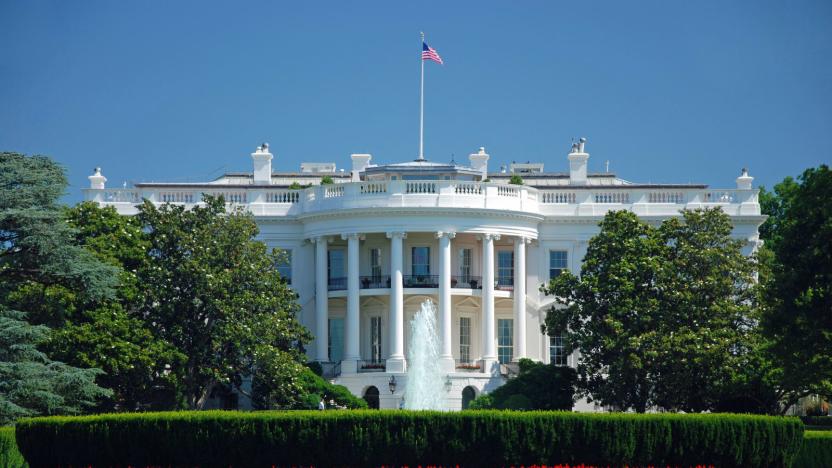
White House to host innovation talk with tech CEOs
The White House is set to host a roundtable discussion next week that will include a number of tech CEOs, the Wall Street Journal reports. A White House email says those attending will discuss "bold, transformational ideas" that "can help ensure US leadership in industries of the future," and they'll do so December 6th. Among those reportedly participating are Microsoft CEO Satya Nadella, Google CEO Sundar Pichai, Oracle co-CEO Safra Catz, Qualcomm CEO Steve Mollenkopf, Blackstone Group CEO Steve Schwarzman and Carnegie Mellon University President Farnam Jahanian.

Volkswagen wants to use quantum computers to optimize traffic
If you've ever had your bus show up later than scheduled, here's a welcome development for you. Volkswagen, with the help of D-Wave, has tapped the power of quantum computing to develop a traffic management system that can better process transport information and improve the performance of fleet services like taxis and public buses.

IBM finally proves that quantum systems are faster than classicals
In 1994, MIT professor of applied mathematics Peter Shor developed a groundbreaking quantum computing algorithm capable of factoring numbers (that is, finding the prime numbers for any integer N) using quantum computer technology. For the next decade, this algorithm provided a tantalizing glimpse at the potential prowess of quantum computing versus classical systems. However, researchers could never prove quantum would always be faster in this application or whether classical systems could overtake quantum if given a sufficiently robust algorithm of its own. That is, until now.

Quantum entanglement on demand could lead to a super-secure internet
If you're going to create virtually unbreakable quantum networks, you need to create quantum entanglement so that particles, and thus pieces of data, are intertwined at long distances. There hasn't been a reliable way to make that happen, however, until now. Scientists at TU Delft have produced the first entanglement on demand -- that is, they can reliably trigger the quantum pairing effect and make it last long enough to be meaningful. The effect only worked across two nodes and a modest distance of about 6.6 feet, but it raises the possibility of a quantum internet that's far more secure than what you see today.

Senate bills would make quantum computing a priority
There's a worldwide race to dominate quantum computing, and two new pieces of legislation might help the US claim the lead. Senator Kamala Harris has introduced the first, the Quantum Computing Research Act, to provide a "competitive edge" in development. It would create a Quantum Computing Research Consortium in the Department of Defense to coordinate progress, offer grants and oversee initiatives. The measure would boost the economy, create jobs and bolster national security, if you ask Harris.
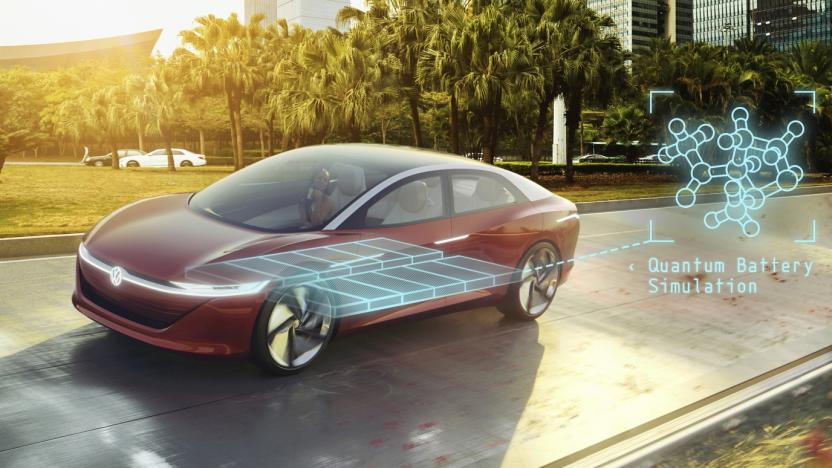
Volkswagen using quantum computers to build better EV batteries
Making high-performance batteries for electric vehicles is a complicated, time-consuming process. So much so that engineers at Volkswagen have started using a quantum computer to simulate the chemical structures like lithium-hydrogen and carbon chains much faster. The idea is to continue using quantum computing to eventually develop a sort of blueprint for tailor-made batteries that can be optimized for different features, like weight reduction, power density or power cell assembly.

Scientists invented a real-life flux capacitor, but not for time travel
If you watched Back to the Future over the holiday weekend and wished the flux capacitor was a real thing so you could travel through time, we have sorta good news. Scientists from Australia and Switzerland have proposed a real-life flux capacitor -- but you won't be able to travel back to a high school dance in the '50s with it.

Diamond 'guitar' strings could lead to quantum computer memory
Quantum computers need memory to perform tasks like their conventional counterparts, but it's hard to create that memory when it only takes nearby vibrating atoms to lose all their data. Scientists may have a clever solution, though: tune diamond like a guitar string. They've crafted a quantum memory system where micron-wide diamond crystal strings house impurities that are better suited to data-storing electrons. If you subject the diamond to a voltage, you can stretch it and boost the frequencies the electrons are sensitive to, much like you would tighten a guitar string to change its pitch. It'll be harder to disturb the data, in other words.
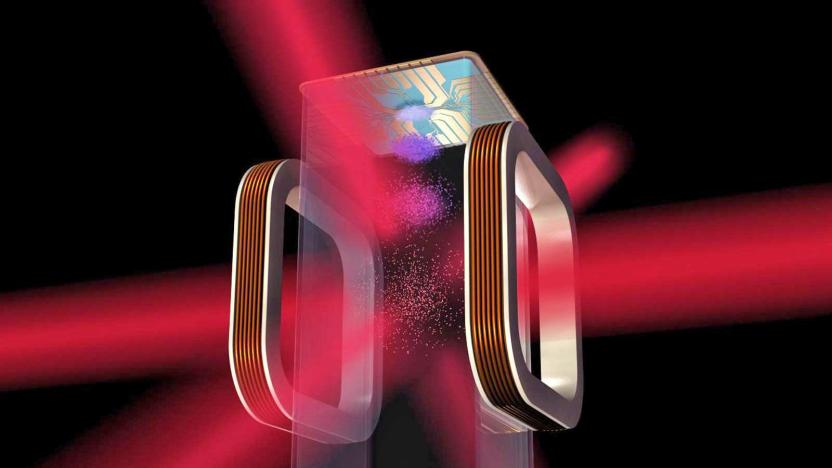
NASA will create coldest place in the universe to study quantum physics
It's hard to study quantum behavior on Earth. You can amplify the effects of quantum mechanics by zapping groups of specific atoms (Bose-Einstein condensates) with lasers that drop their temperature to near absolute zero, but that only works for fractions of a second before gravity invariably takes over. NASA's solution? Create the coldest known place in the universe. The agency just launched the Cold Atom Lab, a box that takes advantage of microgravity aboard the International Space Station to keep condensates in that ideal state for much longer.
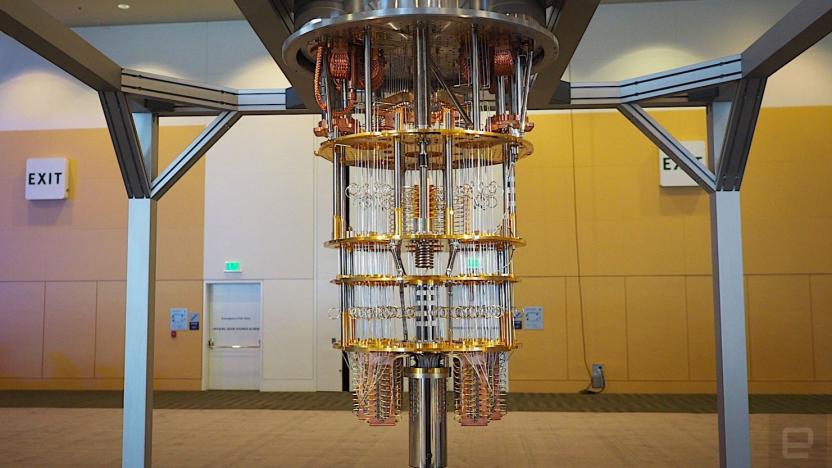
Not even IBM is sure where its quantum computer experiments will lead
Despite the hype and hoopla surrounding the burgeoning field of quantum computing, the technology is still in its infancy. Just a few years ago, researchers were making headlines with rudimentary machines that housed less than a dozen qubits -- the quantum version of a classical computer's binary bit. At IBM's inaugural Index Developer Conference held in San Francisco this week, the company showed off its latest prototype: a quantum computing rig housing 50 qubits, one of the most advanced machines currently in existence.
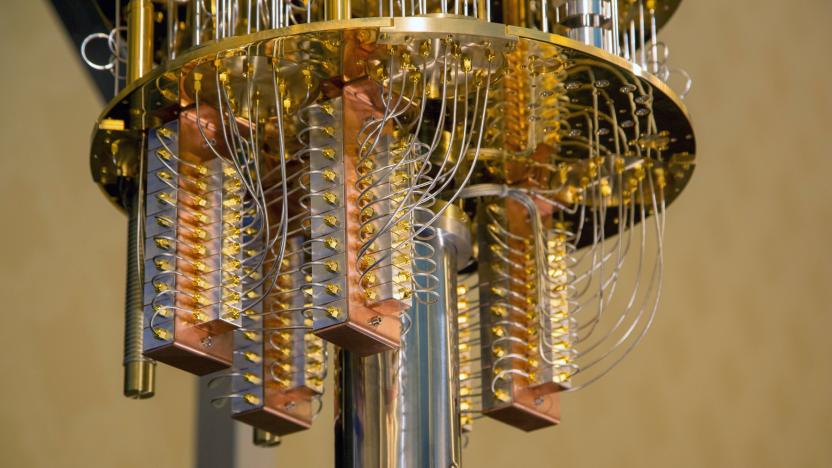
This is what a 50-qubit quantum computer looks like
From afar, it looks like a steampunk chandelier. An intricate collection of tubes and wires that culminate in a small steel cylinder at the bottom. It is, in fact, one of the most sophisticated quantum computers ever built. The processor inside has 50 quantum bits, or qubits, that process tasks in a (potentially) revolutionary way. Normally, information is created and stored as a series of ones and zeroes. Qubits can represent both values at the same time (known as superposition), which means a quantum computer can theoretically test the two simultaneously. Add more qubits and this hard-to-believe computational power increases. Last November, IBM unveiled the world's first 50-qubit quantum computer. It lives in a laboratory, inside a giant white case, with pumps to keep it cool and some traditional computers to manage the tasks or algorithms being initiated. At CES this year, the company brought the innards -- the wires and tubes required to send signals to the chip and keep the system cool -- so reporters and attendees could better understand how it works. The biggest challenge, IBM Research Vice President Jeffrey Welser told me, is isolating the chip from unwanted "noise." This includes electrical, magnetic and thermal noise -- just the temperature of the room renders the whole machine useless.
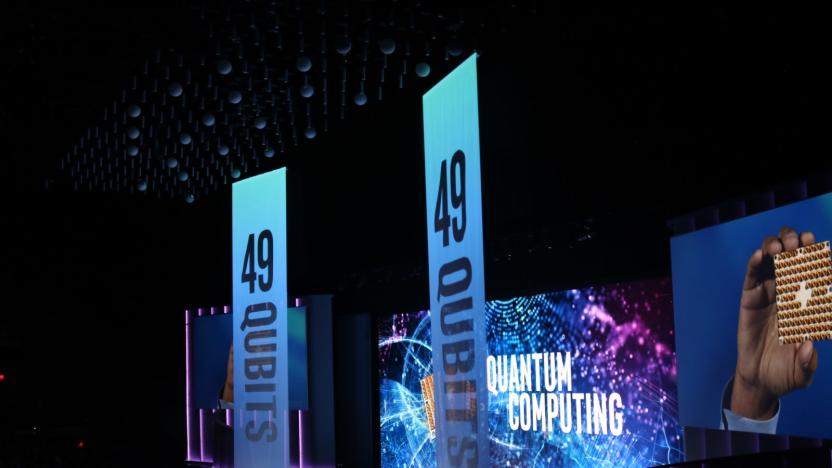
Intel’s quantum computing efforts take a major step forward
It's been almost three months since Intel announced a 17-qubit superconducting chip, meant to pave the way for a future powered by quantum computers. Today at CES, Intel CEO Brian Krzanich showed off its latest superconducting test chip, the 49-qubit Tangle Lake.

Europe unveils roadmap for the next decade of quantum computing
Back in 2016, the EU invested 1 billion euros (almost $1.2 billion at today's exchange rates) in quantum computing. Now, a year and a half later, it's time for an update on what's happening thanks to a 150-page roadmap on European quantum technologies. It also outlines where the project will go over the next decade.

Microsoft offers developers a preview of its quantum computing kit
Developers hoping to get on the quantum computer train early can now get started with Microsoft's Quantum Development Kit, a free preview version of which was released today. The kit, which was first announced at Microsoft's Ignite conference in September, includes the Q# programming language, a quantum computing simulator that can simulate 30 logical qubits of power and a companion collection of documentation, libraries and sample programs that will help developers get a better foothold on the complex science behind quantum computing.

Quantum encryption is now fast enough for voice calls
Quantum encryption is theoretically a dream for security, as you can't even inspect the data without altering it. However, it's currently several times slower than the conventional kind, which makes it impractical for voice calls or streaming video. Science may have come to the rescue, though: researchers have developed a quantum encryption key distribution system that promises to be five to 10 times faster than existing methods, or roughly on par with conventional encryption when run in parallel. The trick was to cram more data into each photon.
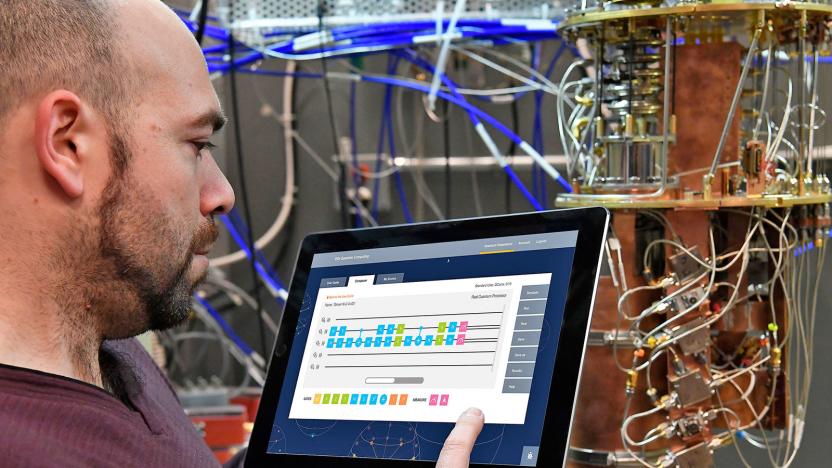
IBM's processor pushes quantum computing closer to 'supremacy'
IBM Q research has built and tested an operational 50 qubit prototype processor, a huge leap up from its previous record of 17 qubits. The company is also set to make a 20 qubit quantum system available online for clients to try, with an updated superconducting design, connectivity and packaging. That'll let users run computations with a "field-leading" 90 microseconds of coherence, allowing "high-fidelity quantum operations," IBM says.

Corkscrew light beams could lead to practical quantum computers
Who said light only had to travel in boring waves or particles? Not Harvard. Its researchers have found a way to spin light into complex states that promise breakthroughs in multiple fields. They've built metasurfaces whose elaborate optics combine two kinds of light momentum (orbital angular and spin angular) to send light into corkscrews, spirals or even fork-like shapes. If you want to change the light state, you just need to change the polarization of that light.
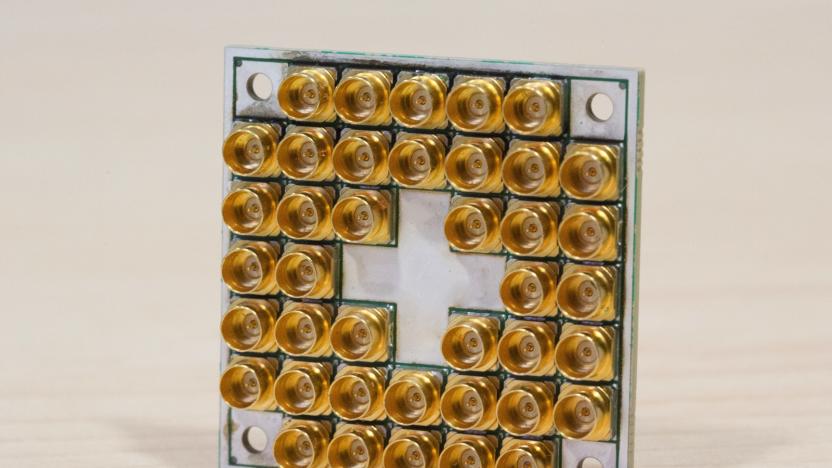
Intel created a superconducting test chip for quantum computing
Quantum computing is the next big technological revolution, and it's coming sooner than you might think. IBM unveiled its own quantum processor this past May, scientists have been experimenting with silicon-laced diamonds (and basic silicon, too) as a quantum computing substrate, Google is already looking at cloud-based solutions and Microsoft is already creating a new coding language for the technology. Now Intel has taken another big step towards a quantum computing reality: the company has created a new superconducting chip using advanced material science and manufacturing techniques, and delivered it to Intel's research partner in the Netherlands, QuTech.

Microsoft’s new coding language is made for quantum computers
When one of the first personal computers, the Altair 8800 came along in 1976, Microsoft was ready with a programming language, Altair BASIC. It wants to be equally prepared when quantum computers go mainstream, so it has unveiled a new programming language and other tools for the futuristic tech at its Ignite conference. You'll still need to understand Qubits and other weird concepts, but by integrating traditional languages like C# and Python, Microsoft will make it easier to do mainstream computing on the complex machines.









